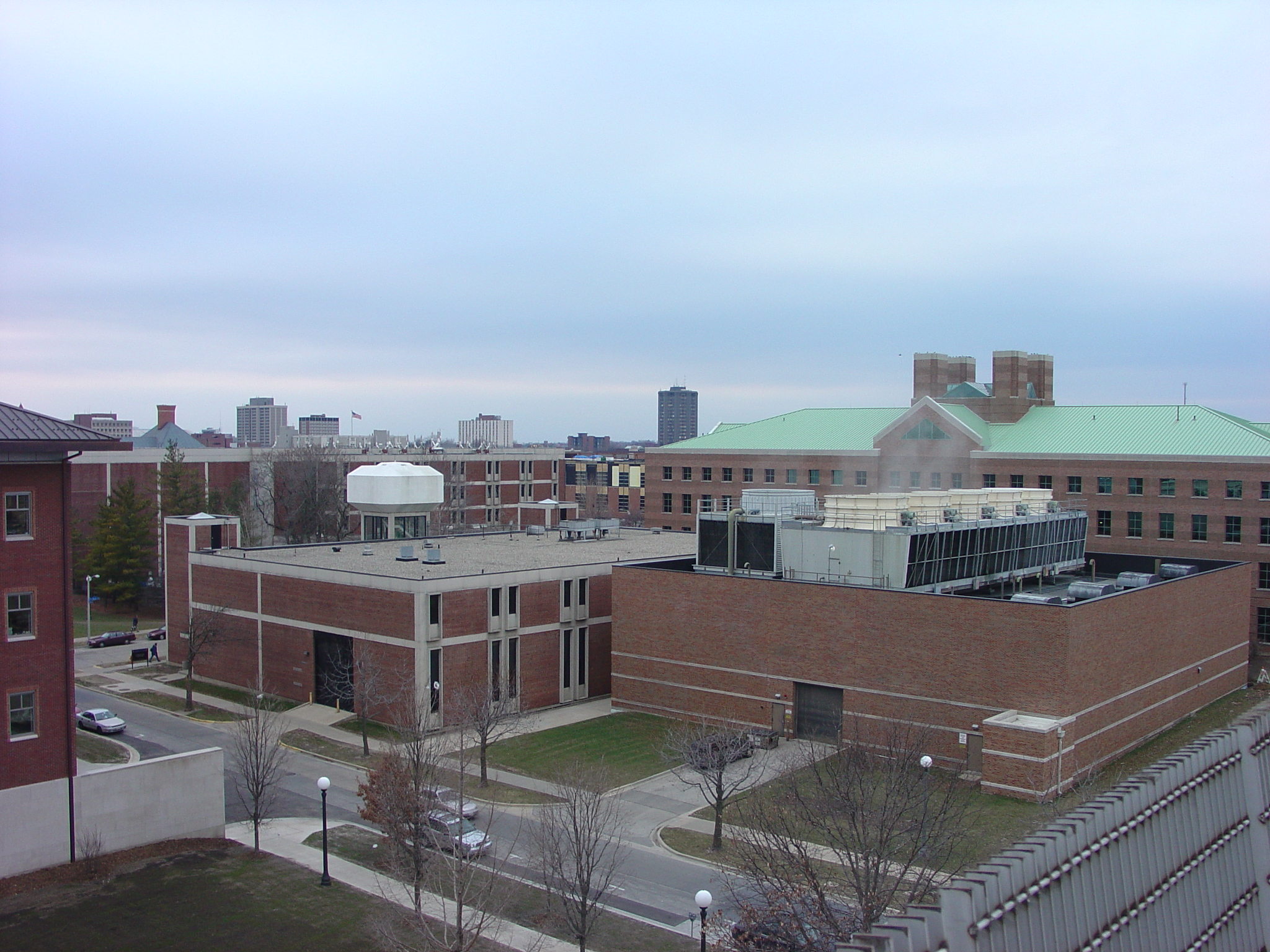Campus Chilled Water System (CCWS)

In the late 1990s, air conditioning on the 2000-acre campus was supplied by a fleet of old and deteriorating chillers which remove heat from the water used in air conditioning. Compounding the chiller age and maintenance issue was the multitude of cooling towers serving them: 56 single and multi-tower installations in similar aged and deteriorated condition. Maintenance of this old equipment cost approximately $2M.
Regional Plant Concept
In 2004, a $50M conversion to an alternative chilled-water configuration using regional chilled-water plants serving a large central-piping loop connecting campus buildings was started.
Today, chilled water used in building air conditioning units is sent through 26 miles of underground pipes to 144 main campus buildings and then warm water is returned to the chilled water plants. The temperature of the chilled water supply at the university is approximately 42 degrees Fahrenheit, and the change in the returning water’s temperature must be at least 15 degrees.
The Campus Chilled Water System (CCWS) is a single networked variable flow distribution piping system served by five* regional chiller plants:
- Oak Street Chiller Plant
- North Campus Chiller Plant
- Library Air Conditioning Center
- Animal Sciences Air Conditioning Center
- Chemistry and Life Sciences Chiller Plant

Oak Street Chiller Plant
*A satellite chiller plant and associated distribution system serves the veterinary medicine campus.
The central loop has reduced cooling energy consumption by an estimated 20 percent. The Campus Chilled Water System provides:
- Increased efficiency (one chiller can feed multiple buildings)
- Increased reliability
- Reduced maintenance costs
- Enhanced energy conservation – the chiller loop operates with fewer chillers, colder chilled water temperatures, and reduced pumping requirements.
Integrated with the campus chilled water system, a 6.5 million-gallon Thermal Energy Storage (TES) tank can produced reserved chilled water at night by operating existing chillers during off-peak hours when building loads subside and electricity costs are low. Chilled water is discharged during afternoon peak cooling periods thus allowing the chillers to be turned off when electricity costs are highest.
Documents
